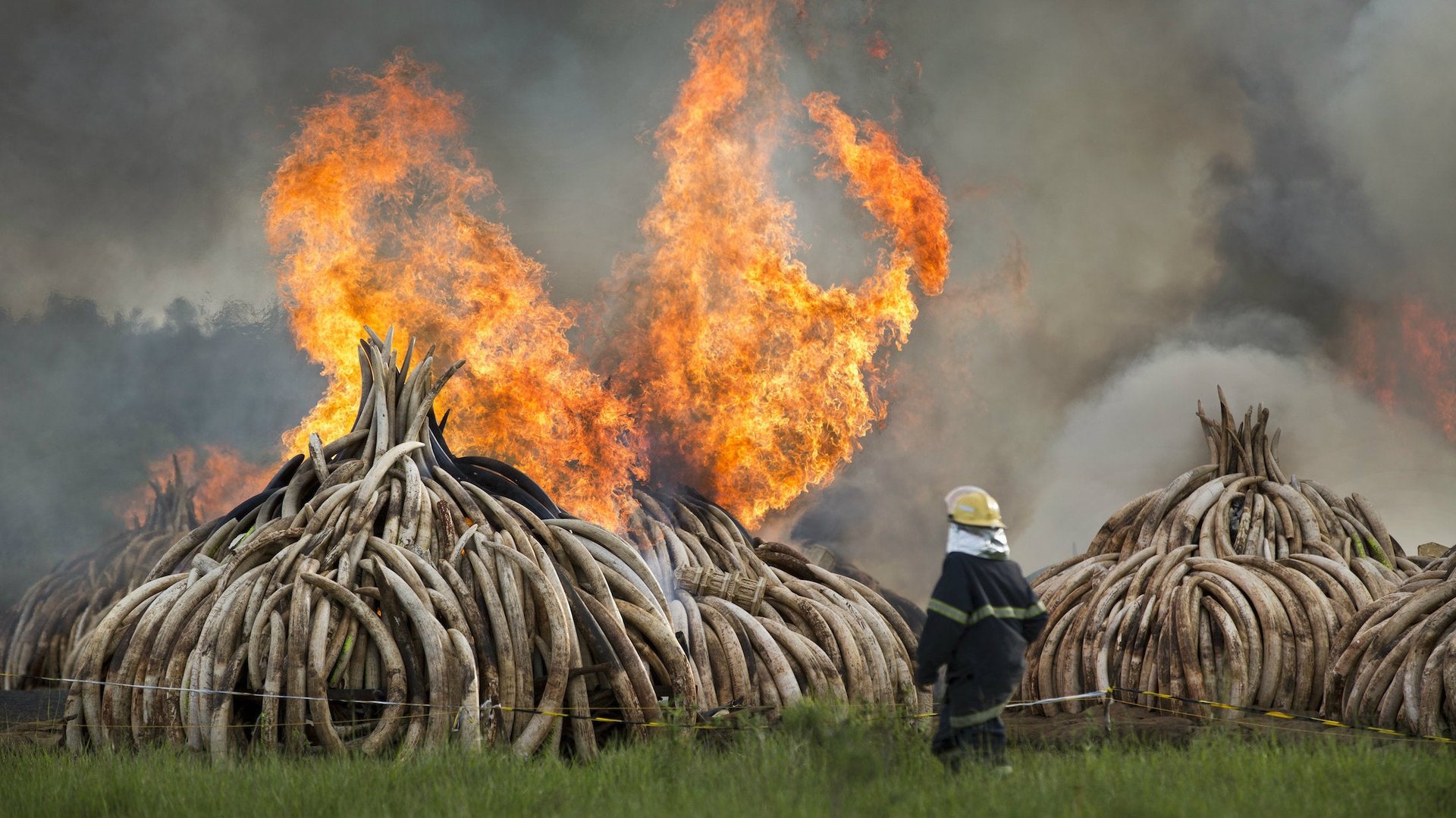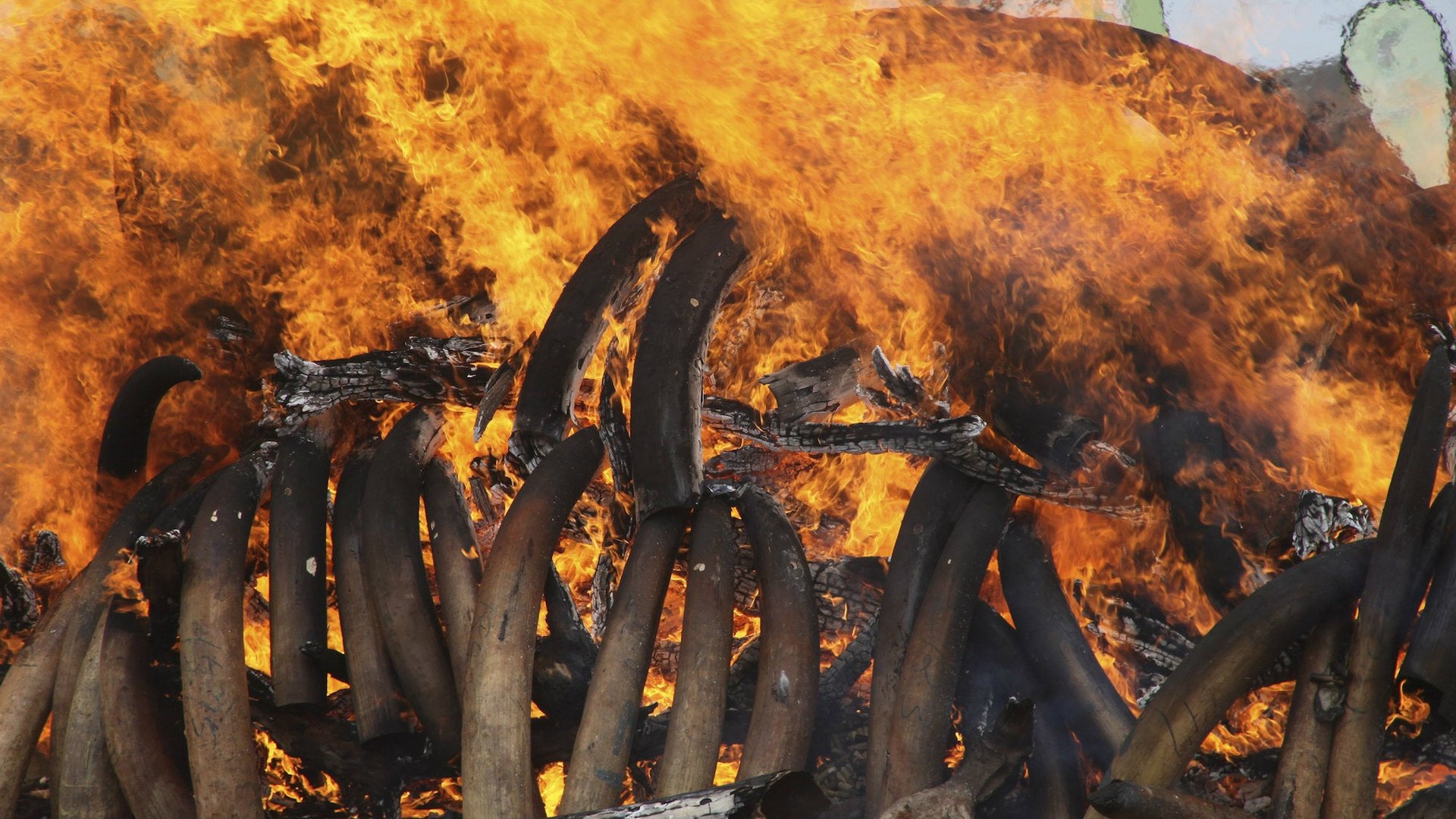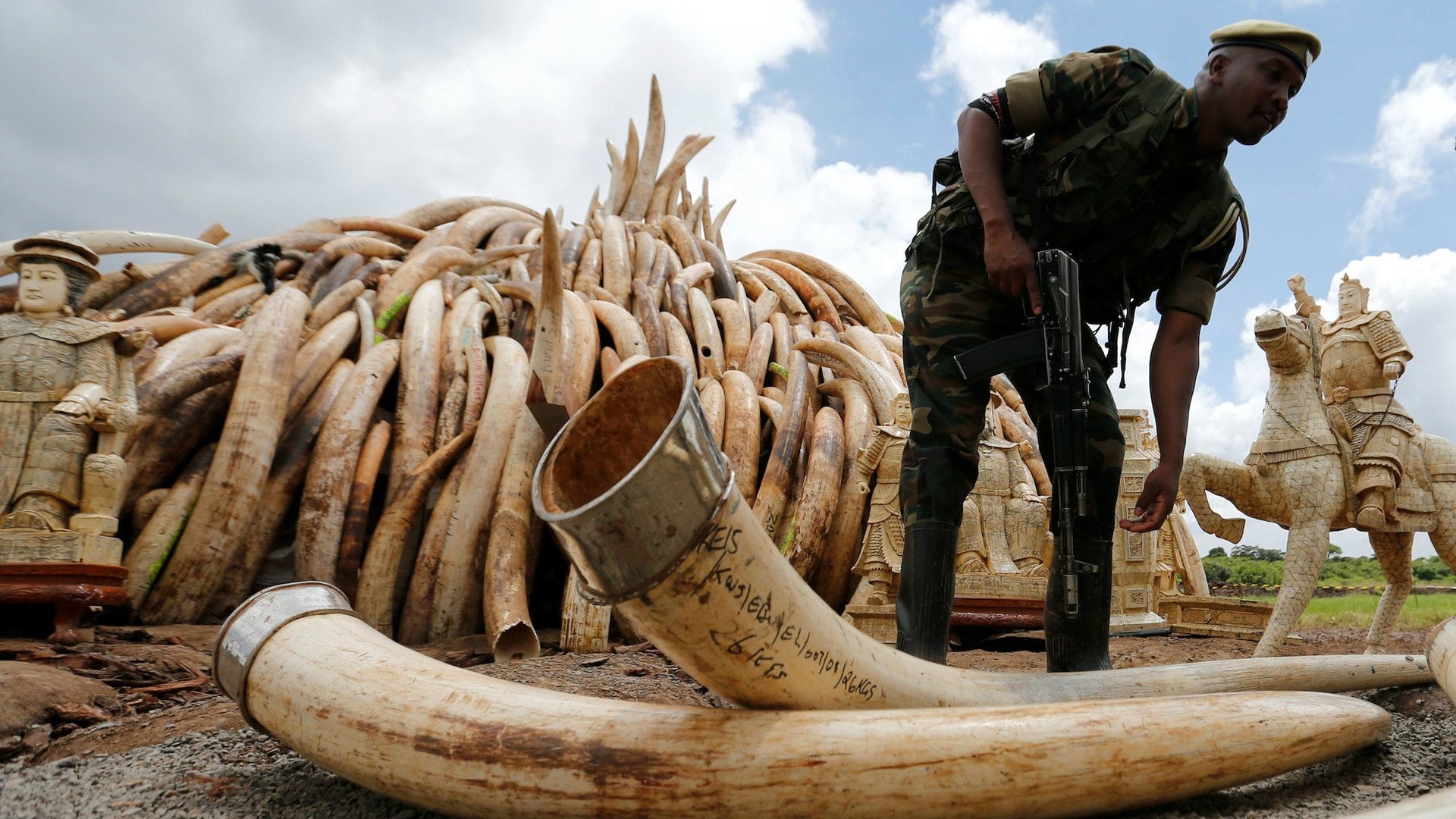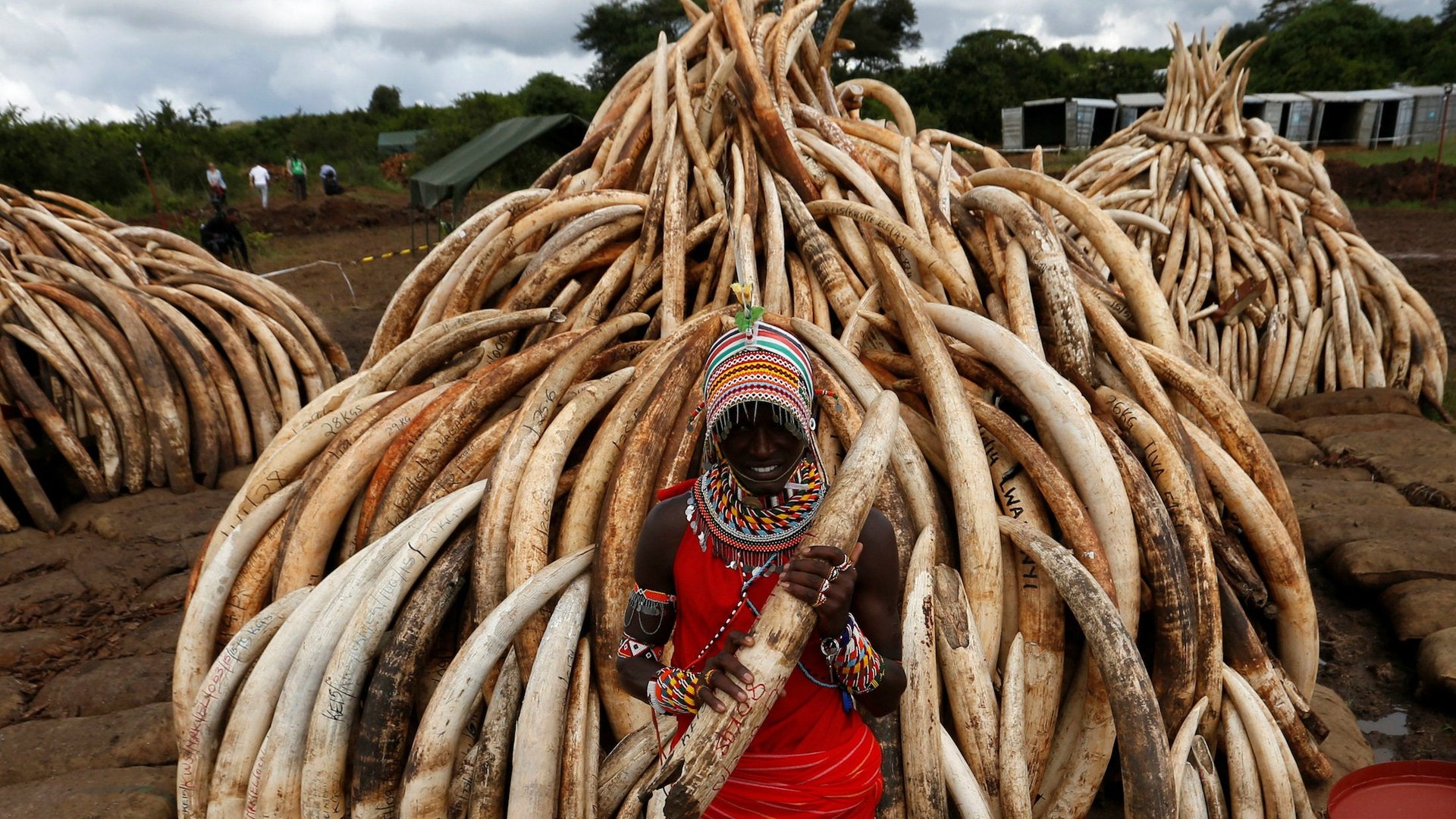Kenya is burning 5% of the world’s stockpile of ivory
Kenya set fire to 11 pyres of ivory in Nairobi National Park today (April 30), a symbol of the country’s fight against poaching. Because ivory doesn’t burn well, more than 10,000 liters of diesel mixed with kerosene were injected into the stacks of ivory through pressurized pipes underground. It will take days to burn all 105 tonnes of tusks.


Kenya set fire to 11 pyres of ivory in Nairobi National Park today (April 30), a symbol of the country’s fight against poaching. Because ivory doesn’t burn well, more than 10,000 liters of diesel mixed with kerosene were injected into the stacks of ivory through pressurized pipes underground. It will take days to burn all 105 tonnes of tusks.
The burning, a tradition started in 1989 when former president Daniel Arap Moi personally set fire to 13 tonnes of ivory, is the largest decimation of ivory by any country since its trade was banned in the late 1980s. The ivory is worth 3 billion Kenyan shillings on the black market ($300 million) and accounts for an estimated 5% of the world’s stockpiles, according to the organizers. The goal of the mass destruction is to render the ivory “beyond economic use,” according to the Kenya Wildlife Service.
Critics say the burning is little more than a publicity event. (The ivory would be better incinerated in ovens, but the visual effect wouldn’t be as dramatic.) This is Kenya’s fourth burning since 1989, yet the illegal ivory trade is alive and well in the country. Over the last 25 years, a total of 160 tonnes of ivory—not including today’s burning— have been destroyed around the world, and still African elephants are on track to be extinct within a decade.
Botswana, where almost half of Africa’s population of elephants lives, has boycotted the event because it devalues the elephant tusks. “For us, burning an elephant’s tusks is like putting the final nail in the coffin of a once magnificent animal. We believe we should preserve and protect whatever remains of these creatures as a reminder of how mankind’s greed leads to the extinction of our planet’s flora and fauna,” Botswana’s environment minister,Tshekedi Khama, wrote in an editorial this week.



Other critics argue that destroying ivory is counterproductive—by reducing the amount entering the market, the value of available stocks increases, as does the incentive for poachers, some critics argue. ”These destructions may indeed have mobilized global opinion, but if so it has been equally ineffective since tens of thousands of elephant continue to be poached each year,” writes Mike Norton-Griffiths (paywall), a conservationist in Nairobi.
A better method for saving Africa’s elephants may be tackling the corruption that allows the trade to continue. Of the eight countries identified as the world’s biggest ivory traffickers, six are ranked as the world’s most corrupt, researcher Elizabeth Bennet from the Wildlife Conservation Society, points out in a paper last year. In Kenya, president Kenyatta’s administration has been accused of protecting poachers and lower-level government officials have been connected to ivory smuggling.